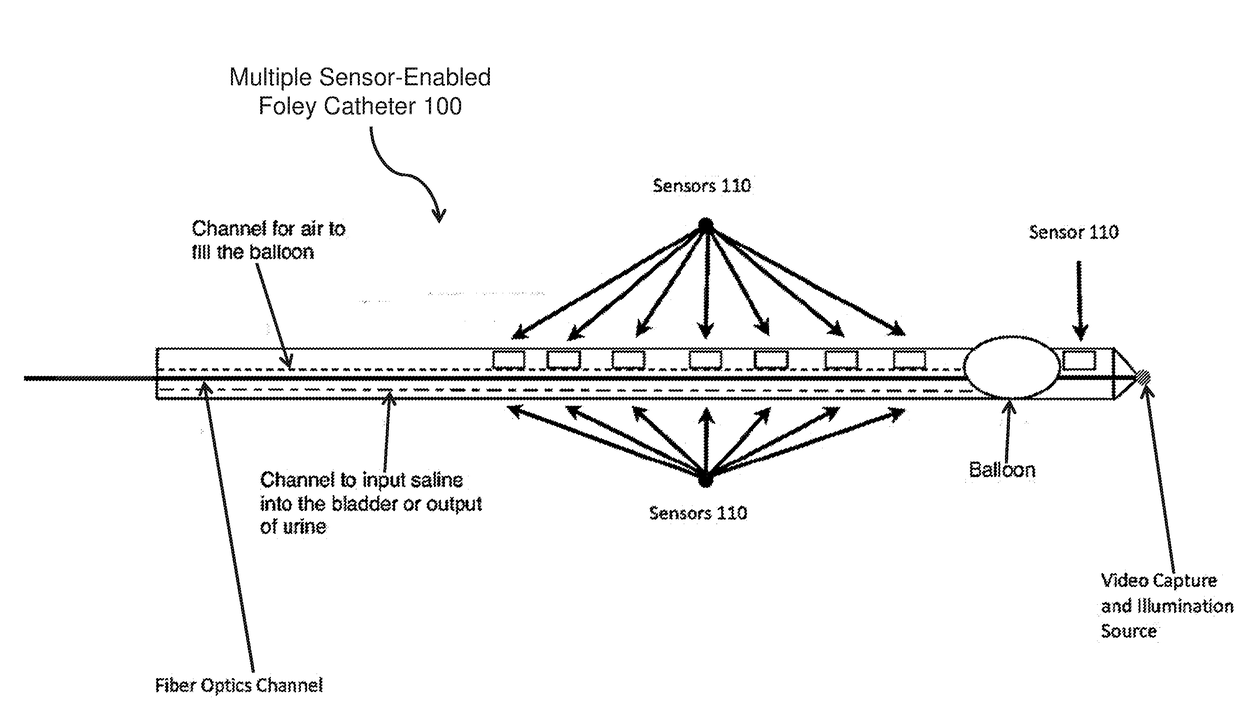Treatment of urinary incontinence
a technology for urinary incontinence and diagnosis, applied in the field of diagnosis and treatment of urinary incontinence, can solve the problems of increasing the chance of leakage, low muscular pressure around the urethra, and high failure rate of current surgeries
- Summary
- Abstract
- Description
- Claims
- Application Information
AI Technical Summary
Benefits of technology
Problems solved by technology
Method used
Image
Examples
specific examples
[0032]As described earlier, the catheters of the present invention may embody at least one sensor capable of measuring and reporting at least one data type, including position, movement, pressure, and flow. These include, but are not limited to, magnetic, electromagnetic, microelectromechanical, radio frequency, ultrasound and video. One example of a multiple sensor-enabled catheter is a Foley catheter containing various microelectromechanical (MEMS) devices: a 3-axis accelerometer, a roll / pitch gyroscope and a yaw rate gyroscope, and a pressure and flow transducer. The devices may be mounted on a small flexible printed circuit board (PCB) and then attached to the Foley catheter. The 3-axis accelerometer tracks translation of the Foley catheter in three directions. The gyroscopes are utilized to account for gravitational rotation, allowing real-time movement to be tracked.
[0033]A PCB is prepared with the three MEMS devices mounted thereon. Soft leads trail the MEMS devices to suppor...
PUM
 Login to View More
Login to View More Abstract
Description
Claims
Application Information
 Login to View More
Login to View More - R&D
- Intellectual Property
- Life Sciences
- Materials
- Tech Scout
- Unparalleled Data Quality
- Higher Quality Content
- 60% Fewer Hallucinations
Browse by: Latest US Patents, China's latest patents, Technical Efficacy Thesaurus, Application Domain, Technology Topic, Popular Technical Reports.
© 2025 PatSnap. All rights reserved.Legal|Privacy policy|Modern Slavery Act Transparency Statement|Sitemap|About US| Contact US: help@patsnap.com


